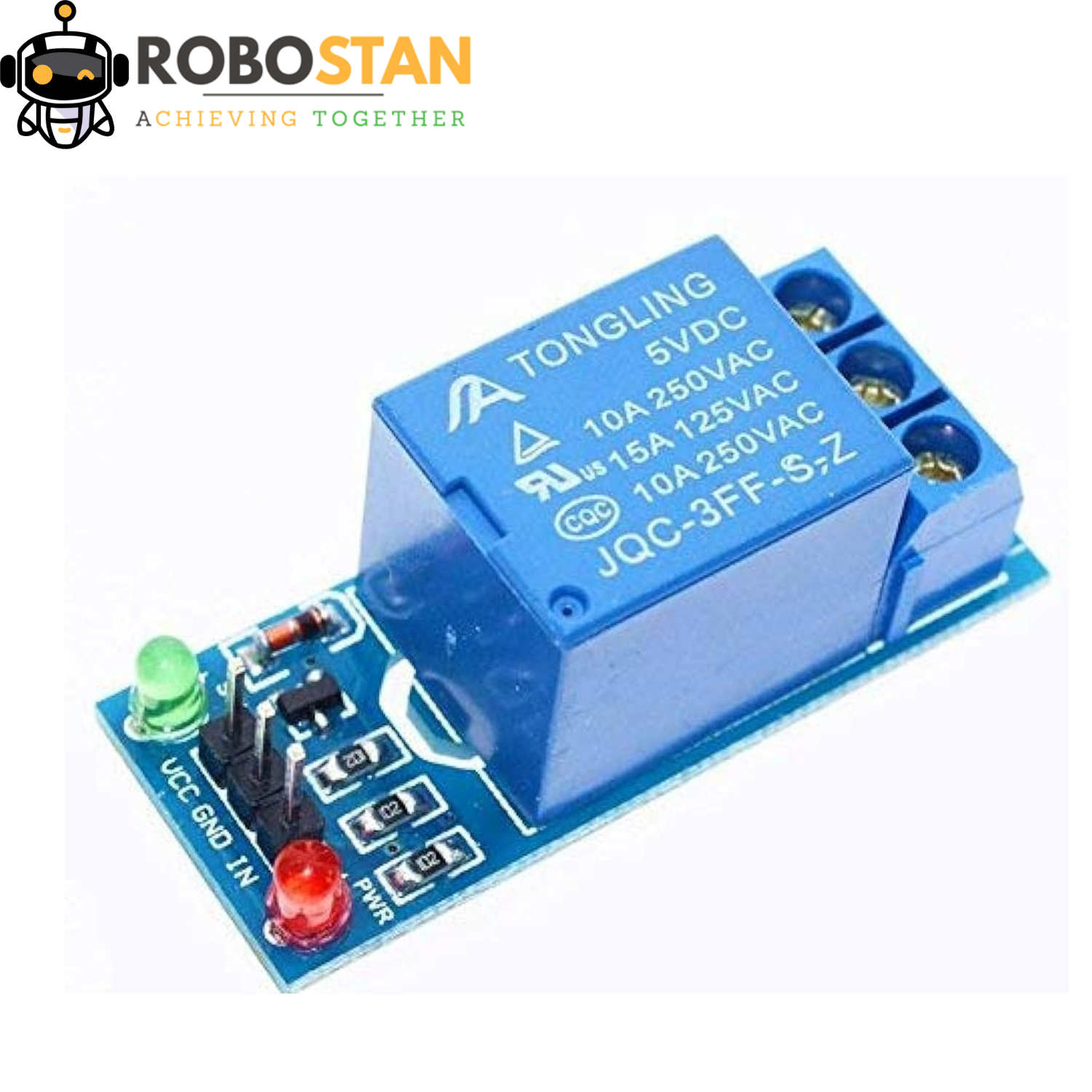1 Channel Relay Module For Arduino In Pakistan
Key Features of 1 Channel Relay Module For Arduino In Pakistan:
Isolation: The relay provides electrical isolation between the low-voltage control side (Arduino) and the high-voltage load side, ensuring safety during operation.
Easy Integration: The module is designed to be compatible with most Arduino boards. It often comes with clearly labeled pins and can be connected easily using jumper wires.
Indicator LED: Many relay modules feature an LED that indicates whether the relay is activated, making it easier to debug and monitor.
Operating Voltage: Most 1 Channel Relay Modules operate on 5V DC, making them perfect for direct use with Arduino without the need for additional voltage regulation.
₨120
Compare1 Channel Relay Module For Arduino In Pakistan
1 Channel Relay Module For Arduino In Pakistan. The 1 Channel Relay Module is an essential component for hobbyists and professionals working with Arduino-based projects in Pakistan. This compact device allows users to control high-voltage appliances using the low-voltage output from an Arduino board. With the increasing popularity of home automation, robotics, and IoT projects, understanding how to integrate a relay module into your designs has become crucial.
What is a Relay Module?
A relay is an electromechanical switch that opens and closes circuits electromechanically or electronically. In simpler terms, a relay allows a low-power signal to control a high-power circuit. The 1 Channel Relay Module typically has a single relay that can switch on or off a device powered by AC or DC voltage. It usually features input pins for control signals, along with connections for the load (the device being controlled) and a power source.
Key Features of 1 Channel Relay Module For Arduino In Pakistan:
Isolation: The relay provides electrical isolation between the low-voltage control side (Arduino) and the high-voltage load side, ensuring safety during operation.
Easy Integration: The module is designed to be compatible with most Arduino boards. It often comes with clearly labeled pins and can be connected easily using jumper wires.
Indicator LED: Many relay modules feature an LED that indicates whether the relay is activated, making it easier to debug and monitor.
Operating Voltage: Most 1 Channel Relay Modules operate on 5V DC, making them perfect for direct use with Arduino without the need for additional voltage regulation.
Applications of 1 Channel Relay Module For Arduino In Pakistan:
The 1 Channel Relay Module can be employed in various applications, including:
Home Automation: Control lights, fans, or appliances remotely using an Arduino and a relay module.
Security Systems: Integrate the module into alarm systems to control sirens or notification devices.
Robotics: Use relays to manage motors or other high-power components that require more current than the Arduino can provide.
IoT Projects: Combine the relay with Wi-Fi or Bluetooth modules to enable remote control of devices via smartphones or web applications.
Setting Up the Relay Module
Using a 1 Channel Relay Module with Arduino is straightforward. Here’s a basic setup:
Connections:
Connect the VCC pin of the relay module to the 5V pin on the Arduino.
Connect the GND pin of the relay to the GND on the Arduino.
Connect the IN pin to one of the digital pins on the Arduino (e.g., pin 7).
Wiring the Load:
Connect one terminal of the appliance to the common (COM) terminal of the relay.
Connect the normally open (NO) terminal to the power source.
The other terminal of the appliance should be connected to the ground.
Programming the Arduino: Use the following simple code to control the relay:
cpp
Copy code
int relayPin = 7; // Define the pin for the relay
void setup() {
pinMode(relayPin, OUTPUT); // Set relay pin as an output
}
void loop() {
digitalWrite(relayPin, HIGH); // Turn the relay on
delay(1000); // Wait for a second
digitalWrite(relayPin, LOW); // Turn the relay off
delay(1000); // Wait for a second
}
Purchasing in Pakistan
In Pakistan, 1 Channel Relay Modules are readily available from various online electronics retailers, local electronics shops, and marketplaces like Daraz and OLX. Prices can vary based on the manufacturer and the specific features of the module, but they are generally affordable, making them accessible for students and DIY enthusiasts alike.
Conclusion
The 1 Channel Relay Module is an invaluable tool for anyone interested in electronics and programming in Pakistan. Its ability to safely control high-voltage devices with an Arduino opens up a myriad of possibilities for innovative projects. Whether you’re looking to automate your home or delve into robotics, this simple yet powerful module can be a gateway to creating smarter solutions. Embracing such technology not only enhances practical skills but also fosters creativity in designing modern electronic systems.
Based on 0 reviews
Be the first to review “1 Channel Relay Module For Arduino In Pakistan”
You must be logged in to post a review.




There are no reviews yet.